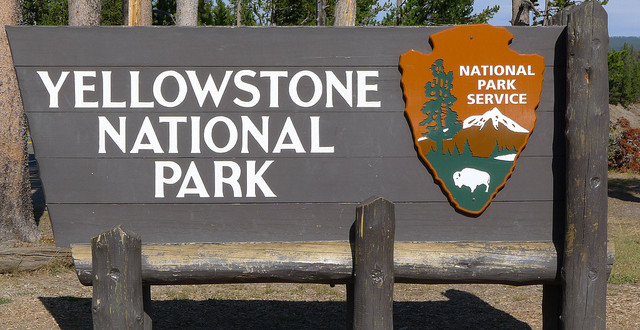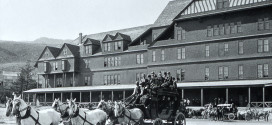If you had never seen Yellowstone National Park before, how would you react to a description of it?
After more than 140 years, it’s easy to take Yellowstone’s wonders for granted. Or at least, it’s easy to understand why Yellowstone became America’s first national park. Of course, there was a time when Yellowstone was “undiscovered,” when geysers and fumaroles did not roar in the public’s imagination.
Prior to the series of expeditions and surveys that established Yellowstone as a real place, most knowledge of Yellowstone came from individual accounts viewed as fanciful and/or unreliable. It was the stuff of tall tales: boiling water spurting from ground stained all shades of orange and yellow, juxtaposed by towering mountains and crystal-clear waters, in America of all places.
Indeed, Yellowstone National Park has inspired numerous tall tales, some of which were (and still are) very funny.
Take this tale from trapper guide Jim Bridger, a figure who either embodies the Western spirit in all its variegation or the temptation to unreliably mythologize the West. This story was recounted in Stanley Vestal’s biography of Bridger.
In Vestal’s version: “One day, Jim said, he sighted a bull elk, drew a careful bead on the critter, and pulled the trigger. The elk did not even raise his head from the grass to show that he heard the rifle crack. Still the elk grazed undisturbed. A third and fourth shot did no better. Jim was close now. He grabbed his riffle by the barrel, raised it like a club, and charged the elk. Suddenly he was brought up short, and found he had crashed into a mountain of clear glass. Through it he could still see the elk grazing.
“‘Stranger still, the mountain was not only of pure glass, but was a perfect telescope lens, and whereas, the elk seemed but a few yards off, it was in reality, twenty-five miles away.'”
And take this tale from Nathaniel Pitt Langford, one of the men who headed the 1870 Washburn Expedition into Yellowstone National Park. The expedition was less formal than the successive 1871 Hayden Geological Survey, a sense reflected in Langford’s Diary of the Washburn Expedition to the Yellowstone and Firehole Rivers In The Year 1870.
The gist of the story is Langford (after bringing back some globules of silica to Helena, Montana) notices that some of the globules resemble nutmeg seeds. So he slips a real nutmeg into the mix and shows it to one Dr. Hovaker, who proceeds to take it to a jeweler and have it broken open.
When I saw [Dr. Hovaker] returning to the store, in anticipation of the reproof I should receive, I started for the rear door; but the Doctor, entering before I reached it, called me back and in a most excited manner declared that we had discovered real nutmegs, and nutmegs of a very superior quality. He had no doubt that Yellowstone lake was surrounded by nutmeg trees, and that each of our incrustations contained a veritable nutmeg.
After some preliminary planning for an expedition to go nutmeg gathering, the Doctor realizes he’s been duped. Thereafter, according to Langford, Hovaker called the Washburn expedition members “Nutmegs.”
If these stories seem impossible or at least (in the case of Langford’s) improbable, they’re meant to sound that way. Bridger’s story is obviously impossible and Langford’s story (told in a footnote) marks a significant break in an otherwise straightforward narrative. It comes across as whimsy, even if it’s true.
They’re both funny for different reasons. And of course, improbability has always been a part of Yellowstone National Park’s history and will be a part of it for years to come. These days, there’s no need to tell tall tales about Yellowstone or play pranks to get the point across.
 Yellowstone Insider Your Complete Guide to America's First National Park
Yellowstone Insider Your Complete Guide to America's First National Park





